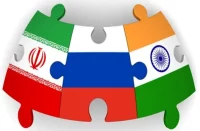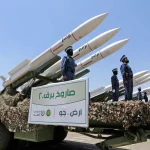Sofya Pale (Russia)
With a meeting between US President Barack Obama and Japanese Prime Minister Naoto Kan held on September 23, the media has begun saying that one of the main topics of discussion was the transfer of one third of the US military bases on the Japanese island of Okinawa to another less exotic island in the Pacific Ocean — Guam, which has been a US possession since 1898 and is located one thousand nautical miles south of Japan’s southern borders.
Guam is a three-hour flight from Tokyo and Manila; four hours from Hong Kong, Seoul and Taipei; five hours from Singapore and Bali; and six from Bangkok, Sydney and Auckland. The island with its population of 175 thousand has had an American presence for a century, including a military presence. Guam was a key strategic base for US offensive operations against Japan during World War II. Now it has the largest US Air Force and Navy bases in the Pacific Ocean; they cover almost 30% of the island. The US Department of Defense pays the government of Guam so much for its military presence that the island needs no international aid, something that the other territories and independent states of Oceania cannot do without. A significant portion of Guam’s GDP comes from Japanese (80%) and South Korean (10%) tourists, who call the island an “America in Asia” — Guam’s “Western exoticism” is much more accessible to Asians than the United States.
In 2008, however, tourism stopped bringing in as much money: Japan underwent a decline in the midst of the global economic crisis, and the South Korean won lost 30% of its value against the American dollar — that quenched the Japanese and Korean desire for travel. Consequently, Guam asked the US government to increase its annual funding by almost a third, especially since America’s new president — Barack Obama — achieved popularity in Oceania as the first “Polynesian” president because he was born in Hawaii, and a great deal of political and economic hope was pinned on him.
The hopes and aspirations of the Guamanians were not realized as they had hoped. Instead of the usual nonbinding subsidies, they were asked to accept eight thousand servicemen and women and another nine thousand family members in the grand relocation of Marine and Air Force personnel from Okinawa, where 23 thousand American service members are currently serving. This massive operation, which is scheduled to conclude in 2014, will give US bases 40% of Guam’s territory.
The opinions of Guam’s residents are divided on the issue. Some local politicians call the plan a catastrophe waiting to happen: the island can expect a flood of guest workers from other Micronesian countries that will disrupt the already fragile ethno-social balance among local communities, and it can expect an environmental disaster — will they be able to feed the increased population with the land area on the island curtailed? The number of extra mouths on Guam is expected to increase to 45 thousand by 2014. But the main thing bothering some Guam public figures is the fact that not a red cent will go to local governments that would, of course, like to invest in renovating and constructing the local infrastructure — ports and highways totally unrelated to supporting the bases.
However, the other Guam politicians look to the future with optimism. They are confident that the new jobs and significant increase in US government funding for Guam resulting from the expanded American military presence will only benefit the island.
The United States is doing everything it can to postpone the “moment of truth.” Some analysts believe that Beijing and Pyongyang (which have recently shown signs of rapprochement) will view the initiation of the relocation of a third of the bases from Okinawa as a weakening of the US position in the Asia-Pacific region: indeed, Guam’s strategic and geopolitical location is far less to America’s advantage than Okinawa’s.
 Kurt Campbell, who was appointed Assistant Secretary of State for East Asian and Pacific Affairs in 2009, is currently representing the United States in negotiations with Japan on Okinawa. His position on the issue has remained unchanged since 2000, when he called the geostrategic location of American “bases in Okinawa perhaps more important now than in the Cold War.”1 When it became clear that a partial relocation of the bases is inevitable, Campbell’s statement in 2009 that “there should be no doubt that the United States itself is a Pacific nation” flew across Oceania.2 Throughout the entire year, US officials in Oceania tirelessly stressed the importance of the invaluable contribution that the peoples of Micronesia (Guam in particular) have made to the development of the United States. Perhaps that is why there has not yet been a general referendum in Guam on the sensitive issue of the transfer of American military bases to the island.
Kurt Campbell, who was appointed Assistant Secretary of State for East Asian and Pacific Affairs in 2009, is currently representing the United States in negotiations with Japan on Okinawa. His position on the issue has remained unchanged since 2000, when he called the geostrategic location of American “bases in Okinawa perhaps more important now than in the Cold War.”1 When it became clear that a partial relocation of the bases is inevitable, Campbell’s statement in 2009 that “there should be no doubt that the United States itself is a Pacific nation” flew across Oceania.2 Throughout the entire year, US officials in Oceania tirelessly stressed the importance of the invaluable contribution that the peoples of Micronesia (Guam in particular) have made to the development of the United States. Perhaps that is why there has not yet been a general referendum in Guam on the sensitive issue of the transfer of American military bases to the island.
Despite taking initial steps to move the bases, the United States still has a glimmer of hope that in the near future Japan will cease insisting on further reductions in the American military presence on Okinawa, not to mention closing bases in other parts of the country. The recent appointment of Seiji Maehara as Japan’s Foreign Minister fanned the flame of that hope. Maehara is a longtime supporter of greater Japanese-American cooperation.
Time will tell how skillfully America maneuvers to defend its interests in the Asia-Pacific as China’s influence in the region grows, the “North Korean threat” increases and Japan insists on getting free of its “elder brother” the United States.
Time will also tell how much Guam wins or loses from the deployment of US military bases on its territory.
Sofia Pale is a Cand. Sc.(History), Centre for South East Asia, Australia and Oceania Studies of the Russian Institute of Oriental Studies.
Source: New Eastern Outlook














Pingback: Jutia Group
Pingback: classic toys
Pingback: World Wide News Flash
I force to practice mi English as I required to say http://orientalreview.su/2010/10/01/is-guam-ready-to-accept-the-us-military-bases-from-okinawa/ is my favorite blog in English. You share me, I thank you.
This is a great resource, I think it would benefit any company that uses this for its employees, as well as individuals. I don’t agree with some of the points however.
Hi, there. This really is a really amazing web site and some very good thoughts within your post. I’ll be back again. Many thanks for that excellent content material. With the way, why not listing your blog in our E-Commerce directory and get a back link from us?
Have you ever thought about including a little bit more than just your articles? I mean, what you say is valuable and all. However imagine if you added some great graphics or videos to give your posts more, “pop”! Your content is excellent but with pics and video clips, this website could definitely be one of the most beneficial in its niche. Fantastic blog!
Pingback: Ecuador: The False Lenin | OrientalReview.org – DE LA GRANDE VADROUILLE A LA LONGUE MARGE